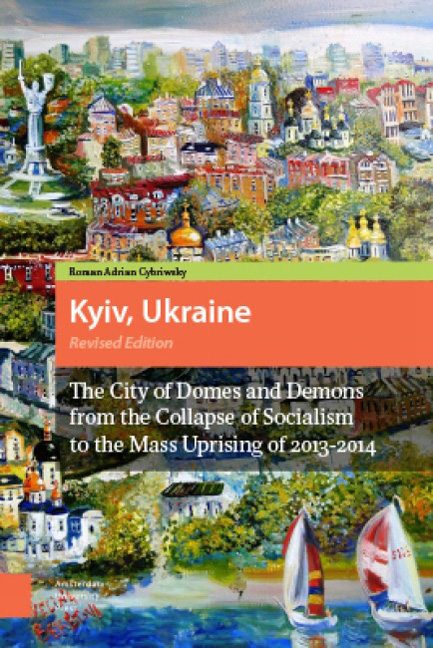 Kyiv, Ukraine
Kyiv, Ukraine Book contents
- Frontmatter
- Dedication
- Contents
- List of Illustrations and Tables
- A Note about Transliteration
- Preface and Acknowledgements
- 1 Far from Heaven
- 2 The Missing Museum of the History of the City of Kyiv
- 3 Sketches from the Capital
- 4 Soviet Ways, Post-Soviet Days
- 5 Historical Memory
- 6 The Center of Kyiv
- 7 A Geography of Privilege and Pretension
- 8 Landscapes of Struggle
- 9 “Suburbia”
- 10 Seamy Stories
- 11 The Defenders of Kyiv
- 12 Reflections
- Postscript
- References
- References
5 - Historical Memory
Published online by Cambridge University Press: 10 December 2020
- Frontmatter
- Dedication
- Contents
- List of Illustrations and Tables
- A Note about Transliteration
- Preface and Acknowledgements
- 1 Far from Heaven
- 2 The Missing Museum of the History of the City of Kyiv
- 3 Sketches from the Capital
- 4 Soviet Ways, Post-Soviet Days
- 5 Historical Memory
- 6 The Center of Kyiv
- 7 A Geography of Privilege and Pretension
- 8 Landscapes of Struggle
- 9 “Suburbia”
- 10 Seamy Stories
- 11 The Defenders of Kyiv
- 12 Reflections
- Postscript
- References
- References
Summary
Place-name Gymnastics
The Soviet Union was adept at branding, and it changed the names of places under its control at will, most famously replacing certain czaristperiod names with new names that honored the Bolshevik Revolution (Wanner, 1998, pp. 172-199). For example, in 1924 Petrograd (formerly St. Petersburg and named at first after the name saint of Peter the Great and then after the Russian czar himself) became Leningrad after Vladimir Lenin, the revolution's main leader; in the same year Yekaterinburg, named after Catherine the Great, became Sverdlovsk to honor Bolshevik leader Yakov Sverdlov; and in 1925 Tsaritsyn, meaning “the czar's city,” became Stalingrad, “the city of Stalin.” In the industrial district of Donbas in eastern Ukraine, a growing city founded in 1869 that was named Yuzhovka (Yuzhivka in Ukrainian) after John Hughes, a Welsh entrepreneur who opened coal mines and built a steel plant in the region, was renamed Trotsk after Leon Trotsky for a few months in 1923, and was then quickly renamed Staline and then Stalino. All of these cities were renamed almost in a single stroke in 1991 after the fall of the Soviet Union: Stalino became Dontesk, Leningrad reverted to St. Petersburg, Sverdlovsk went back to Yekaterinburg, and Stalingrad became Volgograd. Furthermore, during the years of struggle for communist rule, young revolutionaries in their prime rebranded themselves personally: the man who was born Ioseb Besarionis dze Jughashvili became Joseph Vissarionovich Stalin, or simply Stalin (man of steel); while the man born Lev Davidovich Bronshtein in a small town near Kherson in the south of Ukraine eventually changed his name to Leon Trotsky. The new names, of course, are the names they took to their graves.
Instability of place-names has marked spaces within cities, too, with politically important changes being made at critical times to the toponymy of streets, urban districts, parks, squares, schools, factories, subway stations, and many other elements of the urban landscape. There are directories published for individual cities, including Kyiv, that help residents keep track of both newly approved names that they should learn and the banished names they should avoid, as well many traces in the cityscape itself of place-name transition.
- Type
- Chapter
- Information
- Kyiv, UkraineThe City of Domes and Demons from the Collapse of Socialism to the Mass Uprising of 2013–2014, pp. 129 - 150Publisher: Amsterdam University PressPrint publication year: 2014
